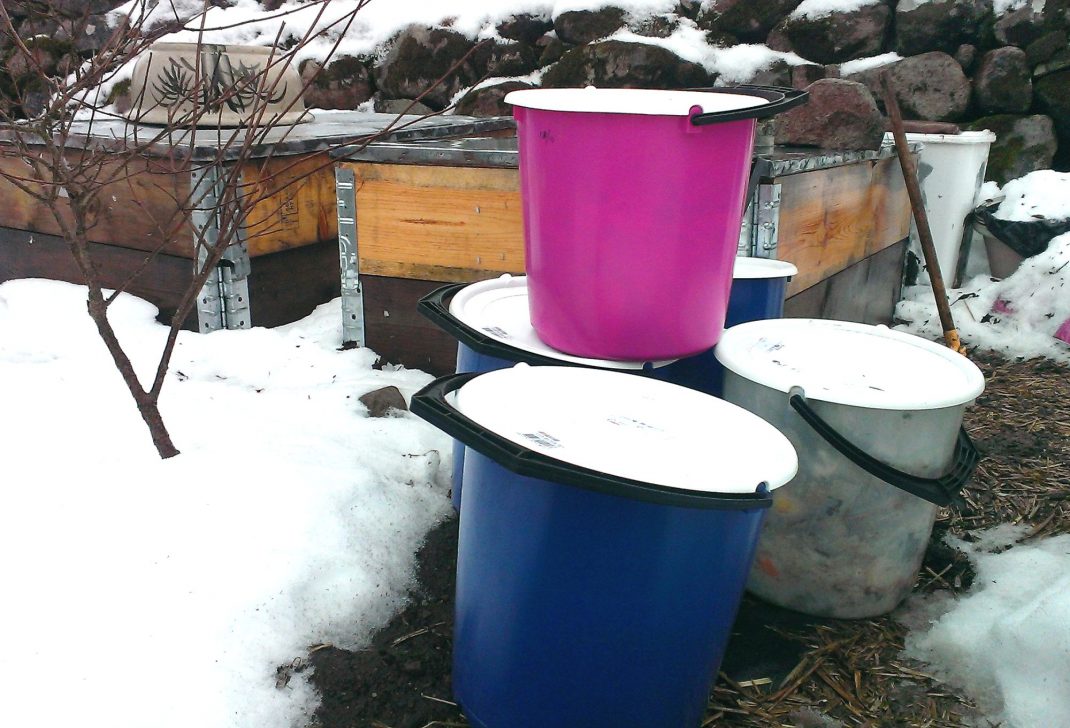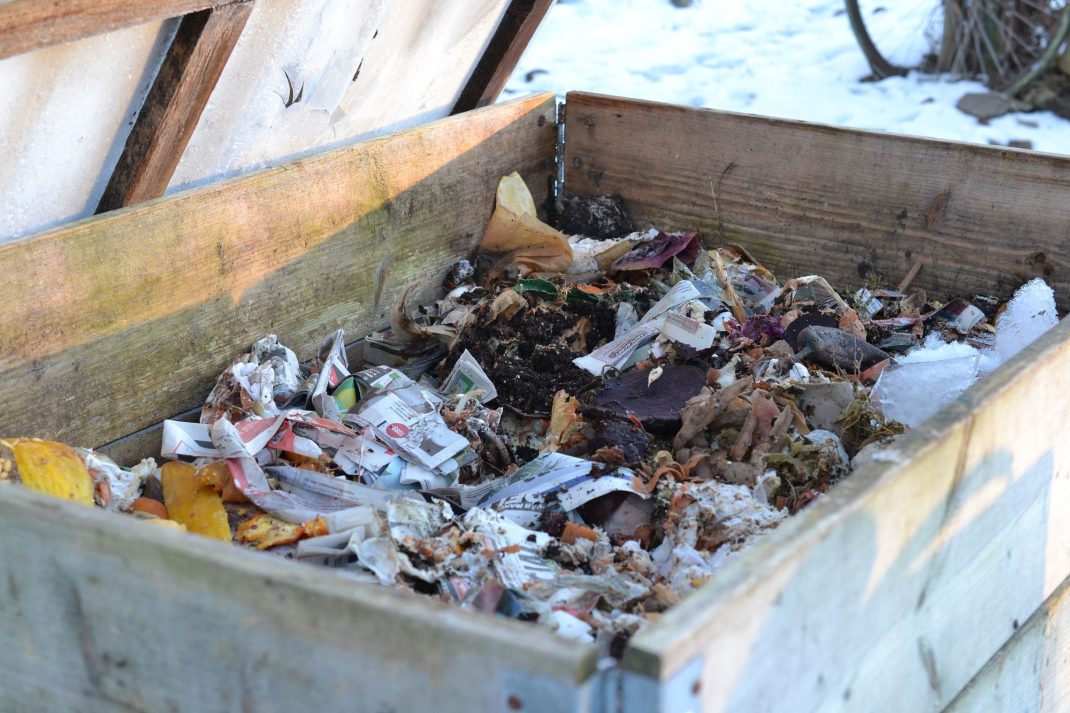6 tips for storing bokashi compost in winter
It doesn't matter if you live in a house with a garden or an apartment, these 6 tips are useful for anyone who wants to store their bokashi compost over winter.
A lot of people are interested in bokashi compost and want to start using it in their own gardens. But some feel a bit hesitant because they don't know how what to do with it during winter, when you can't bury it in the garden. Storing bokashi compost seems difficult, right?
Learn more about bokashi here: My video guide on bokashi compost
Using bokashi in winter is actually not a problem. I have been doing it for several years now and I think it's quite fun since I can be so flexible working with it. These are my six best tips for storing bokashi compost in winter:
1. Keep the compost in buckets
You can bring the bokashi bucket outside when it's full and it's been indoors for at least 14 days. It doesn't matter if the contents of the bucket freeze. The microbes in the soil will get activated when the compost thaws again.

You can keep the bokashi buckets both outdoors or inside. You could even leave them outside in winter and wait until spring to empty them. Storing bokashi compost doesn't have to be harder than that!
2. Store the bokashi compost in bins
I often need to use my buckets for new compost, so storing my bokashi in bins is usually a good option. For example if it's cold and I can't dig or keep it anywhere else. I have a large bin on wheels with holes in the bottom (for air, it's easy to make yourself.) I empty my buckets in it during winter. When spring comes again, I just roll it out into the garden and empty the compost straight into one of my beds.
3. Keep it in bags
Sometimes, I don't have the time or energy to be creative. So, I sometimes store bokashi compost in biodegradable plastic bags, inside a barrel or some other spot away from animals. Then I simply bury the compost and the bags when I have the time.
4. Put your compost in pots
You can start preparing next year's pots already in winter, even if the soil is frozen or it's cold outside. Watch the video below to learn how it's done. The soil on top can of course be replaced by store-bought soil from a bag too.
5. Keep it in barrels
This is the larger version of growing in pots. You can put your barrel in a greenhouse or keep it outside. Use the method in the video above, but put layers of leaves, grass clippings or plant parts in between the layers of compost. Top it off with soil and grow vegetables straight in the barrel.
6. Use pallet collars for the compost
I use pallet collars to store my compost outside in winter. I simply stack two pallet collars and then I put down a layer of newspaper in the bottom. After that, I alternate layers of compost and old leaves. When the pallet collars are filled up, I pack the material by walking around on top of the pile. I add some more compost and top it off with a layer of soil. A lid on top protects the compost against nosy animals.

The compost turns into amazing soil in the blink of an eye. You can use this soil for next year's pots.
Remember that bokashi compost is really popular with some animals. Birds, foxes, dogs, cats, mice and rats would love to eat bokashi compost if given the chance, so make sure to protect it with for example a lid.
You could also put a net or some mesh fencing on top to keep birds and other animals out. Smaller rodents might be harder to avoid. We have four cats and they take care of some of them, but I also put out traps. For example underneath the lids in my pallet collar beds. We haven't had any issues with rats yet, knock on wood!
If you live in an apartment
You can try storing bokashi in an apartment too, even if you don't have a balcony. Many people have their own little soil factories at home, where the compost is stored in large plastic boxes together with layers of leaves or old potting soil. The mix turns into high quality soil you can use for your pots indoors.
It's even easier if you have a balcony:
- Get a barrel, for example a 20 gallon one, from a hardware store
- Drill some air holes in the sides, about an inch or so from the bottom of the barrel.
- Put the barrel on a large tray or similar
- Alternate layers of bokashi compost with old potting soil and plant parts in your barrel and keep the mix there over the winter
- Compress the soil so you can fit a little bit more in there
- Top it off with a layer of soil
- Grow vegetables on top
You can start on the next barrel when the first one is full. When the season is over, you can use the composted material from the first barrel for the layers in the second one. It's really this simple to start a little soil factory on your balcony!
My experience with using bokashi in winter is that it's very easy to do and to adapt to both my needs and the needs of my garden. As you might know by now, I do my gardening as I want to and I like not having a lot of musts. I hope you will give it a try! If this method doesn't work for you, simply start something else! But if you decide to try it, I think you will see all the benefits very quickly and stick to it.
Let me know if you have any creative ideas and tips about storing bokashi in winter that you want to share. Good luck!
/Sara Bäckmo



Leave a Reply
You must be logged in to post a comment.